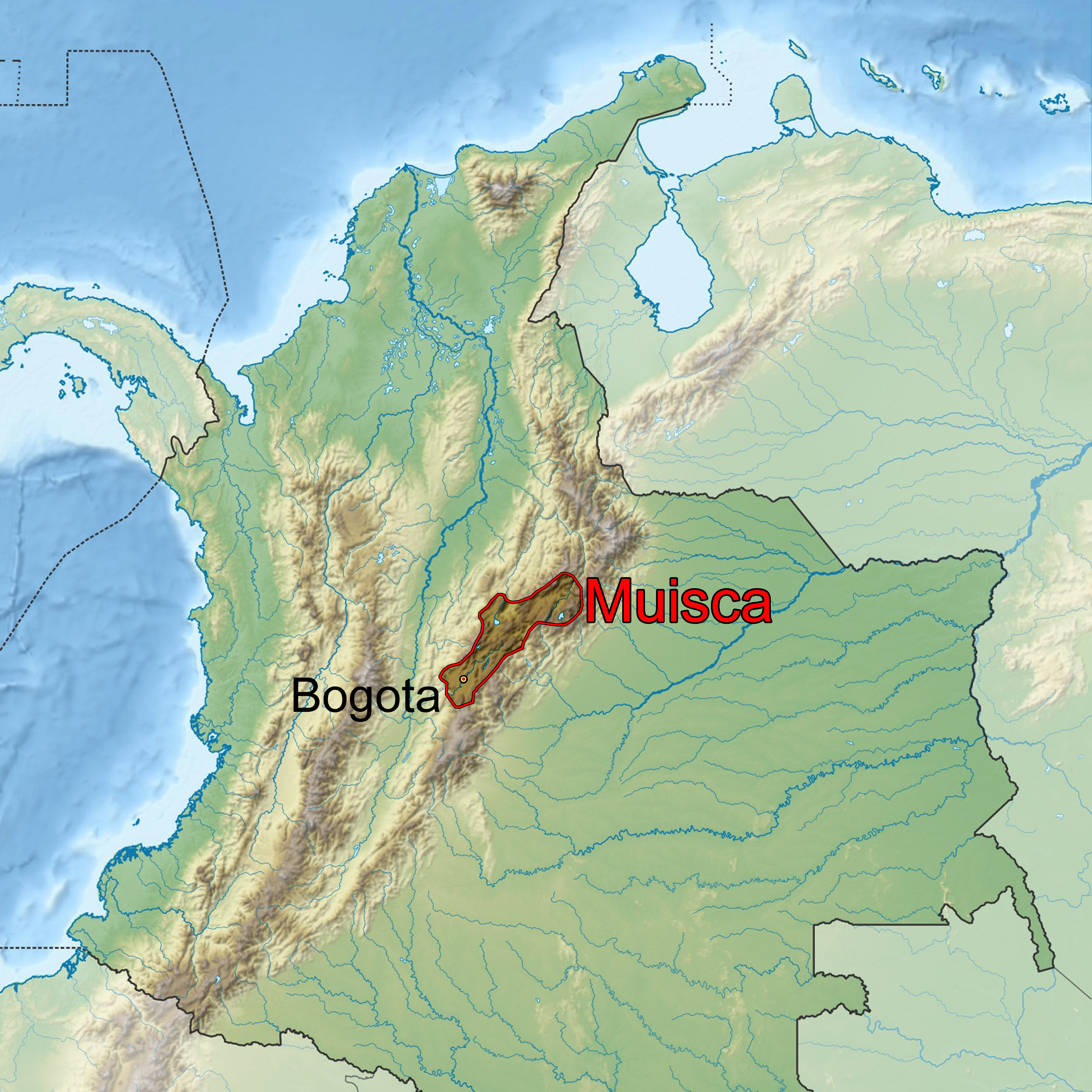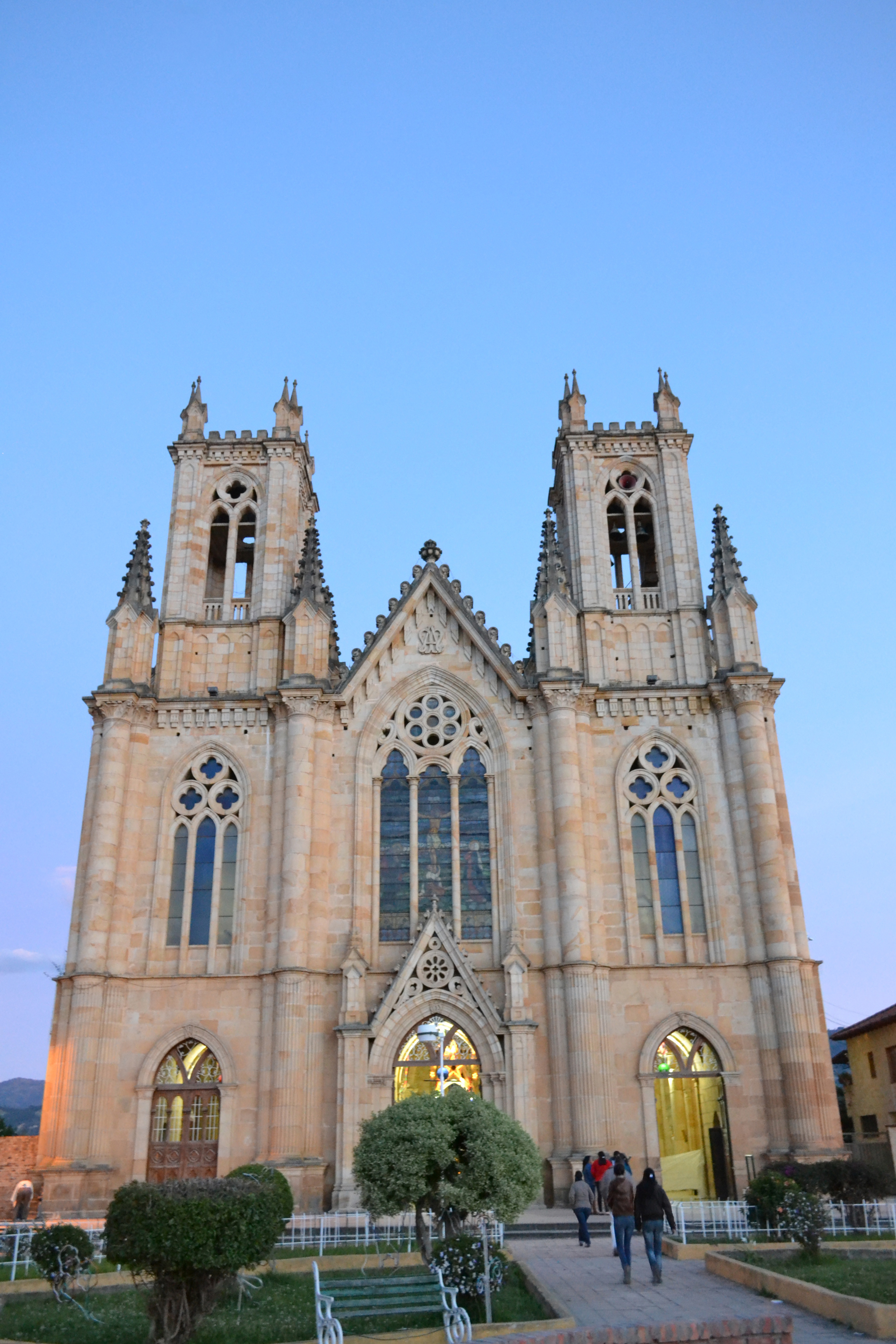|
Sogamoso
Sogamoso () is a city in the department of Boyacá of Colombia. It is the capital of the Sugamuxi Province, named after the original Sugamuxi. Sogamoso is nicknamed "City of the Sun", based on the original Muisca tradition of pilgrimage and adoring their Sun god Sué at the Sun Temple. The city is located at an altitude of on the Altiplano Cundiboyacense in the Eastern Ranges of the Colombian Andes. Etymology Sogamoso is named after Sugamuxi or Suamox, the original name in Chibcha for the city and Sugamuxi, the last ''iraca'' of the sacred City of the Sun. Suamuxi means "Dwelling of the Sun".Etymology Sogamoso - Excelsio.net Knowledge about Sugamuxi has been provided by ... [...More Info...] [...Related Items...] OR: [Wikipedia] [Google] [Baidu] |
Sun Temple (Sogamoso)
The Sun Temple of Sogamoso was a temple constructed by the Muisca as a place of worship for their Sun god Sué. The temple was built in Sogamoso, Colombia, then part of the Muisca Confederation and called Sugamuxi. It was the most important temple in the religion of the Muisca. The temple was destroyed by fire brought by the Spanish conquistadores led by Gonzalo Jiménez de Quesada who was eager to find the legendary ''El Dorado''. A reconstruction has been built in the Archeology Museum of Sogamoso. Structure and worship The Temple of the Sun was built on the right banks of the small river Monquirá. The temple was a large round structure made of poles and clay with a roof made of reed. The temple did not have any windows. The columns surrounding the temple were built in three concentric rings made of wood harvested in Casanare. The temple represented the cosmos and was built to honour Sun god Sué. The temple also was a burial ground for the most important ''caciques'' and ... [...More Info...] [...Related Items...] OR: [Wikipedia] [Google] [Baidu] |
Muisca Confederation
The Muisca Confederation was a loose confederation of different Muisca rulers (''zaques'', ''zipas'', ''iraca'', and ''tundama'') in the central Andes, Andean highlands of present-day Colombia before the Spanish conquest of the Americas, Spanish conquest of northern South America. The area, presently called Altiplano Cundiboyacense, comprised the current departments of Colombia, departments of Boyacá Department, Boyacá, Cundinamarca Department, Cundinamarca and minor parts of Santander Department, Santander. According to some List of Muisca scholars, Muisca scholars the Muisca Confederation was one of the best-organized confederations of tribes on the South American continent. Modern anthropologists, such as Jorge Gamboa Mendoza, attribute the present-day knowledge about the confederation and its organization more to a reflection by Spanish chroniclers who predominantly wrote about it a century or more after the Muisca were conquered and proposed the idea of a loose collection o ... [...More Info...] [...Related Items...] OR: [Wikipedia] [Google] [Baidu] |
Spanish Conquest Of The Muisca
The Spanish conquest of the Muisca took place from 1537 to 1540. The Muisca were the inhabitants of the central Andean highlands of Colombia before the arrival of the Spanish conquistadors. They were organised in a loose confederation of different rulers; the '' psihipqua'' of Muyquytá, with his headquarters in Funza, the ''hoa'' of Hunza, the '' iraca'' of the sacred City of the Sun Sugamuxi, the Tundama of Tundama, and several other independent ''caciques''. The most important rulers at the time of the conquest were ''psihipqua'' Tisquesusa, ''hoa'' Eucaneme, ''iraca'' Sugamuxi and Tundama in the northernmost portion of their territories. The Muisca were organised in small communities of circular enclosures (''ca'' in their language Muysccubbun; literally "language of the people"), with a central square where the '' bohío'' of the ''cacique'' was located. They were called "Salt People" because of their extraction of salt in various locations throughout their ter ... [...More Info...] [...Related Items...] OR: [Wikipedia] [Google] [Baidu] |
Muisca People
The Muisca (also called Chibcha) are an indigenous peoples of Colombia, indigenous people and Pre-Columbian cultures of Colombia, culture of the Altiplano Cundiboyacense, Colombia, that formed the Muisca Confederation before the Spanish conquest of the Muisca, Spanish conquest. The people spoke Muysccubun, a language of the Chibchan languages, Chibchan language family, also called ''Muysca'' and ''Mosca''. They were encountered by list of conquistadors in Colombia, conquistadors dispatched by the Spanish Empire in 1537 at the time of the Spanish conquest of the Muisca, conquest. Subgroupings of the Muisca were mostly identified by their allegiances to three great rulers: the ''zaque, hoa'', centered in Tunja, Hunza, ruling a territory roughly covering modern southern and northeastern Boyacá Department, Boyacá and southern Santander Department, Santander; the ''zipa, psihipqua'', centered in Bacatá, Muyquytá and encompassing most of modern Cundinamarca Department, Cundinama ... [...More Info...] [...Related Items...] OR: [Wikipedia] [Google] [Baidu] |
Sugamuxi
Sugamuxi (died 1539) was the last ''iraca''; ''cacique'' of the sacred City of the Sun Sogamoso, Suamox. Sugamuxi, presently called Sogamoso, was an important city in the Muisca religion, religion of the Muisca people, Muisca who inhabited the Altiplano Cundiboyacense in the times before the Spanish conquest of the Muisca, Spanish conquistadors reached the central highlands of the Colombian Andes. Fellow Muisca rulers of other territories within the Muisca Confederation were Tundama in Duitama, Tundama, ''zaque'' Aquiminzaque in Tunja, Hunza and ''zipa'' Sagipa in Bogotá, Bacatá. Biography Sugamuxi was the successor of Nompanim, as ''cacique'' of Suamox. After the bloody confrontation of the ''zaque'' Quemuenchatocha and ''zipa'' Nemequene, Sugamuxi decided to stay neutral and in favour of peace between the two ever battling parts of the Muisca Confederation. [...More Info...] [...Related Items...] OR: [Wikipedia] [Google] [Baidu] |
Firavitoba
Firavitoba is a town and municipality in Sugamuxi Province, a subregion of the department of Boyacá in Colombia. Before Spanish colonization, Firavitoba was part of the Muisca Confederation of the Chibcha people in the highlands of the Eastern Cordillera of the Colombian Andes. Firavitoba belonged to the Iraca or Suamox state which, uniquely, did not observe a hereditary leadership system but elected its ruler alternately from Firavitoba and Tobasá, two of its many tribes. Firavitoba is distinguished by its neo-Gothic church, the third biggest in Colombia. Nuestra Señora de las Nieves (Our Lady of the Snows) was built between 1873 and 1976, entirely of stone sourced from nearby Sogamoso's Pedregal district. Etymology The name Firavitoba derives from the Muysccubun language of the Muisca people. One etymology gives the root words as ''fiba'' ("air"), and ''faoa'' ("clouds"). Geography Firavitoba is located on the Altiplano Cundiboyacense, at an altitude of metres a ... [...More Info...] [...Related Items...] OR: [Wikipedia] [Google] [Baidu] |
Muisca Religion
Muisca religion describes the religion of the Muisca who inhabited the central highlands of the Colombian Andes before the Spanish conquest of the Muisca. The Muisca formed a confederation of holy rulers and had a variety of deities, temples and rituals incorporated in their culture. Supreme being of the Muisca was Chiminigagua who created light and the Earth. He was not directly honoured, yet that was done through Chía, goddess of the Moon, and her husband Sué, god of the Sun. The representation of the two main celestial bodies as husband and wife showed the complementary character of man and woman and the sacred status of marriage.Muisca religion - Pueblos Originarios - accessed 04-05-2016 The Muisca worshipped their gods at sacred sites, both natural, such as |
Sué
Sué, Xué, Sua, Zuhe or Suhé was the god of the Sun in the religion of the Muisca. He was married to Moon goddess Chía.Ocampo López, 2013, Ch.4, p.33 The Muisca and their confederation were one of the four advanced civilizations of the Americas and developed their own religion on the Altiplano Cundiboyacense in the Andes. Both the Sun and rain, impersonated by Chibchacum, were very important for their agriculture. Description After the creation of light and the world by Chiminigagua he created Chía and Sué to represent the Moon and the Sun respectively. Spanish conquistador Gonzalo Jiménez de Quesada wrote about the Muisca: "they have the Sun and the Moon as breeders of all the things and believe they are together as husband and wife having created the councils". While Chía was related to the ''zipas'' of the southern Muisca Confederation, Sué was governing the ''zaques'' of the northern Muisca. [...More Info...] [...Related Items...] OR: [Wikipedia] [Google] [Baidu] |
Altiplano Cundiboyacense
The Altiplano Cundiboyacense () is a high plateau located in the Eastern Cordillera of the Colombian Andes covering parts of the departments of Cundinamarca and Boyacá. The altiplano corresponds to the ancient territory of the Muisca. The Altiplano Cundiboyacense comprises three distinctive flat regions; the Bogotá savanna, the valleys of Ubaté and Chiquinquirá, and the valleys of Duitama and Sogamoso. The average altitude of the altiplano is about above sea level but ranges from roughly to . Etymology ''Altiplano'' in Spanish means "high plain" or "high plateau", the second part is a combination of the departments Cundinamarca and Boyacá. Geography The limits of the Altiplano are not strictly defined. The high plateau is enclosed by the higher mountains of the Eastern Ranges, with the Sumapaz mountains in the south and Chingaza to the east. The Tenza Valley is located to the east of the Altiplano and the Ocetá Páramo and Chicamocha Canyon are situated ... [...More Info...] [...Related Items...] OR: [Wikipedia] [Google] [Baidu] |
Iraca
The ''iraca'', sometimes spelled ''iraka'',Ocampo López, 2013, Ch.12, p.77Ocampo López, 2013, Ch.14, p.85 was the ruler and high priest of Sugamuxi in the confederation of the Muisca who inhabited the Altiplano Cundiboyacense; the central highlands of the Colombian Andes. ''Iraca'' can also refer to the Iraka Valley over which they ruled. Important scholars who wrote about the ''iraca'' were Lucas Fernández de Piedrahita, Alexander von Humboldt and Ezequiel Uricoechea. Background In the centuries before the Spanish conquistadores entered central Colombia in the 1530s, the valleys of the Eastern Ranges were ruled by four main leaders and several independent ''caciques''. The northern territories were ruled by the ''zaque'' from Hunza, the present-day capital of Boyacá department and the southern area under the reign of the ''zipa'', based in Bacatá, currently known as the Colombian capital Bogotá. Other important rulers were the ''iraca'' and the ''cacique'' Tund ... [...More Info...] [...Related Items...] OR: [Wikipedia] [Google] [Baidu] |
Iza, Boyacá
Iza is a town and municipality in Boyacá Department, Colombia. Iza is located near the Tota Lake and part of the Sugamuxi Province, a subregion of Boyacá. Iza is located in the Eastern Ranges of the Colombian Andes on the Altiplano Cundiboyacense at a distance of from Sogamoso and from the department capital Tunja. The municipality borders Firavitoba and Sogamoso in the north, Sogamoso and Cuítiva in the east, in the west Pesca and Firavitoba, and in the south Cuítiva. History Before the Spanish conquest, the area of Iza was inhabited first by indigenous groups during the Herrera Period and later by the Muisca, organized in the Muisca Confederation. Iza was ruled by the ''iraca'' of Sugamuxi, modern neighbouring Sogamoso. According to Muisca mythology, the messenger god Bochica is said to have lived outside Iza in a cave. In the Chibcha language of the Muisca ''za'' means "night", and ''Iza'' means "place of healing". [...More Info...] [...Related Items...] OR: [Wikipedia] [Google] [Baidu] |
Tibasosa
Tibasosa () is a municipality in the Sugamuxi Province, part of the Colombian Departments of Colombia, department of Boyacá Department, Boyacá. Tibasosa borders Duitama and Nobsa in the north, Nobsa and Sogamoso in the east, Firavitoba in the south and Paipa in the west.Official website Tibasosa Etymology The name Tibasosa comes from Chibcha language, Chibcha and means "Chief of the domain".Etymology Tibasosa- Excelsio.net History In the time before the Spanish conquest of the Muisca, Spanish conquest, Tibasosa was part of the Muisca Confederation, ruled by a ''cacique'' who was l ...[...More Info...] [...Related Items...] OR: [Wikipedia] [Google] [Baidu] |







.png)